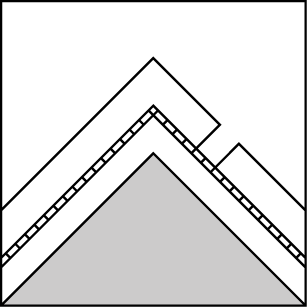Basic Information
Observation Details
Observation Date:
March 22, 2020Submitted:
March 23, 2020Observer:
SAC - VandenBosZone or Region:
Soldier and Wood River Valley MtnsLocation:
East Fork Big WoodSigns of Unstable Snow
Recent Avalanches?
YesCracking?
IsolatedCollapsing?
IsolatedBottom Line
Likelihood of triggering a slide on 3/14 interface is gradually decreasing as overlying slab facets. But, you'd be hard-pressed to talk me into committing to a steep, shaded slope.
Advanced Information
Weather Summary
Cloud Cover:
Mostly SunnyWind:
LightThin, high clouds for much of the morning hours, dissipating into the afternoon. Calm to light winds blowing out of a variety of directions. Snow surface heated up slowly.
Avalanche Observations
| # | Date | Location | Size | Type | Bed Sfc | Depth | Trigger | Comments | Photo |
|---|---|---|---|---|---|---|---|---|---|
| 1 |
SE 8600' |
D1.5 | O-Old Snow | 40cm | N-Natural | Relatively fresh slab. Debris appeared to be wet in character. Observed from a distance, so hard to be certain on nature of release mechanism, but suspect that solar radiation played a role. | None |
Snowpack Observations
Went out to check on persistent slab problem in the southeastern portion of the forecast area. Dug on sheltered NNW aspect at 8,400', where HS=120cm. Snow since 3/14 had settled to 40cm, much of which had faceted. Below this it was facets of gradually increasing size and variable hardness (4F- to F-) to the ground. 12/7 interface was still evident and reactive to CPSTs (scores in the low 30s/110 to END), but unreactive to ECT. I even found a few SH grains here. 3/14 interface yielded consistent ECTPs in the 11-14 range and CPST scores in the low 40s/110 to END. 3/17 interface (down 15cm) looked ugly, with FCsf obvious in pitwall, but didn't produce propagating pit results, likely due to lack of a slab. The current surface is considerably faceted and capped with 1-2mm SH on sheltered mid elevation slopes. This snowpack will continue to react poorly to additional loading.
Avalanche Problems
| Problem | Location | Distribution | Sensitivity | Size | Comments |
|---|---|---|---|---|---|
 Persistent Slab
Persistent Slab
|
|
Layer Depth/Date: 3/14, down 40cm |
Terrain Use
Avoided avalanche terrain on shaded slopes
